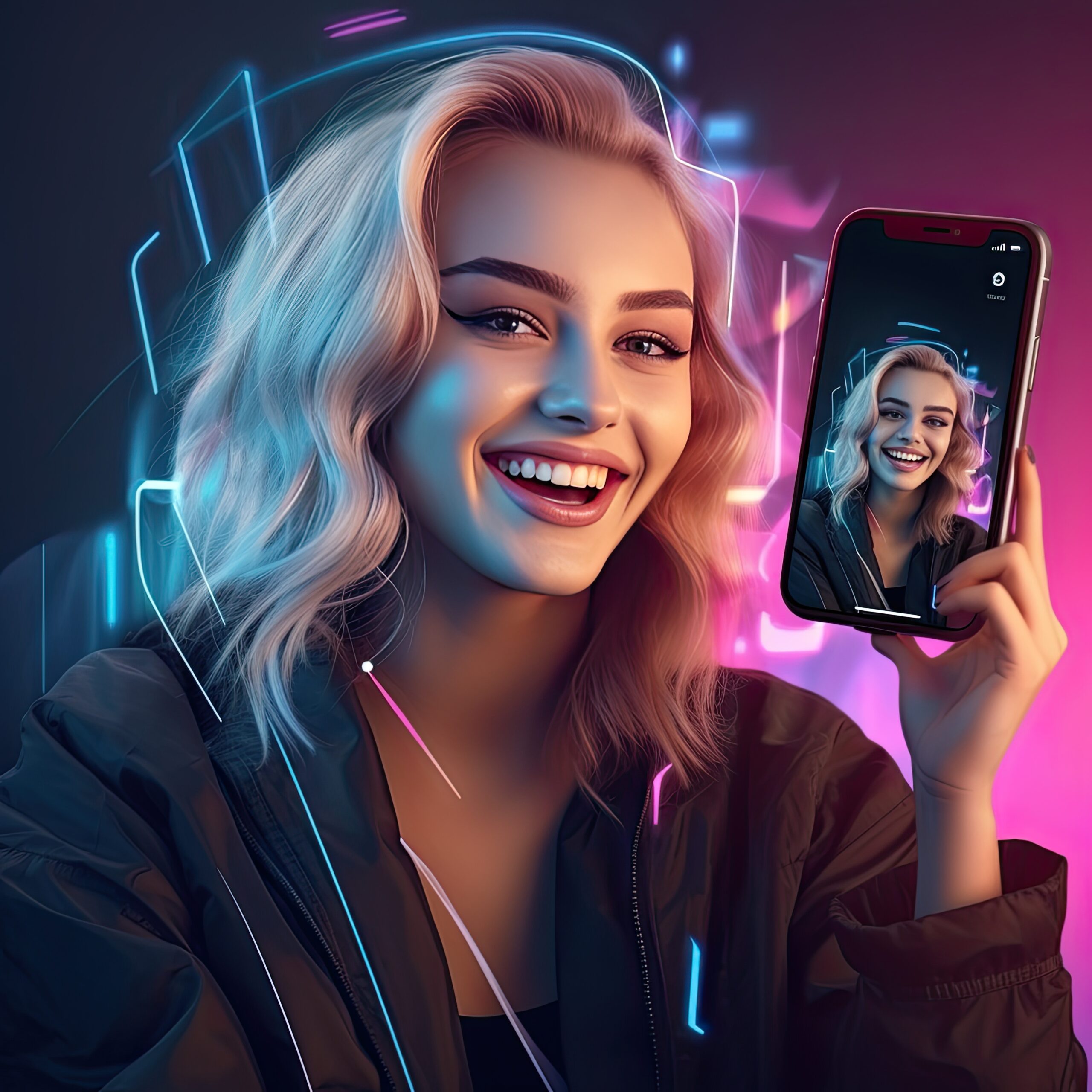Let me introduce you to Itana – she’s an Instagram model from Barcelona who’s been going viral, but she’s also just like, totally chilling, down-to-earth. She’s into fitness and video games, and yeah, if you’re wondering, she does have additional photos on her subscription tier, which brings in about 10 grand per month.
Before you sign up, though, there’s one thing I need to disclose, and it really shouldn’t matter unless you’re some kind of bigot technophobic Nazi, but she’s not a biological female. She is a woman, but entirely artificial.
We strongly recommend that you check out our guide on how to take advantage of AI in today’s passive income economy.
Table of Contents
Welcome to the Future of AI Influencers
It is November 29th, 2023, and you’re reading the Code Report. By the end of this article, you’ll know how to build your own army of AI influencers entirely for free using open-source generative image models like Stable Diffusion XL and checkpoints like Juggernaut that can produce highly realistic images.
The first generative adversarial networks appeared about 10 years ago, and at first, could only produce tiny images that you could barely make out. But now, anyone can produce high-resolution, realistic images good enough to trick sad, lonely men into buying the NSFW content.
The Ethical Dilemma of AI Influencers
It’s extremely sad and depressing that the agency behind this thing is making a six-figure income, especially during the sacred month of No Nut November. Content like this is rotting the brains of billions of men around the world. Although they are doing a 50% off sale right now, so it does look like a pretty good value, actually.
Luckily, 95% of this channel is comprised of high-value alpha males, which means we don’t need to consume content like that. Instead, we reverse engineer it so we can exploit it for financial gain.
There are many tools out there that can help you become an AI pimp. You might be familiar with Midjourney and Dolly from OpenAI, but these are paid closed-source products that also contain a bunch of unwanted safety layers. Luckily, there’s a great open-source ecosystem around generative AI.
Introducing Stable Diffusion XL and Juggernaut
The most well-known base model is Stable Diffusion XL, which was released in Late July 2023. Gigantic models like this take an absurd amount of computing power, but luckily, it’s possible to fine-tune them by creating what’s called a checkpoint using some additional specialized training data.
Now, you don’t have to worry about this part because people have already created a bunch of different checkpoints which you can find on websites like CivitAI, some of which are highly optimized for photorealism.
The next part of the puzzle is finding a UI where we can actually work with these models without having to write any code. The most well-known option is the Stable Diffusion web UI. It’s an incredibly powerful tool but might be a little overwhelming for a beginner. There’s just a lot of different buttons to push.
Exploring the AI Influencer Creation Tools
Another cool option is Comfy UI, which has a drag-and-drop editor that works kind of like Blender or Unreal Engine, but the one I’m using in this video is Fokus or Fucus, and I’ll explain why I like it in just a minute.
You’ll notice all these AI UIs look very similar, and that’s because they’re based on another open-source project called Gradio. An interesting side note is that Gradio builds the front-end with Svelte – pretty cool!
But let’s get started. Check out the install instructions, but basically, all you do is clone the repo, create a virtual environment for Python, and install the packages. Once that’s done, you run this Python script, which will then automatically download the default models in the background. These files are multiple gigabytes large, so it may take a while.
Building Your AI Influencer with Fokus
The base model is Juggernaut XL, which is based on Stable Diffusion and works pretty well for realistic images. You now have the power at your fingertips to PRT out any image you can imagine.
The thing I like about Fokus is that in many ways, it feels similar to Midjourney, but it’s free, and the UI is way more intuitive. I’m running it with a modest Nvidia 3070, and it usually takes about 45 seconds to generate two quality images.
What’s really cool, though, is that if you click on the advanced tab, you’ll get options for performance, aspect ratio, and the number of images. But there’s also a tab for style, and we can mix and match these different styles to get far different results, like this retro video game style or maybe an anime style.
But in order to generate our AI influencer, I’m going to go with the default settings along with “Focus photograph” – create a prompt that’s highly specific and add some imperfections like rough skin, no makeup, etc., to make it more realistic. And now our influencer is born!
Editing and Enhancing Your AI Influencer
Now, let’s go ahead and save this as our base image, then create a new prompt and check the box for “input image.” Drop the base image here to blend multiple images and text together.
Now, click on the “Advan” box below the image so you can fine-tune the way the image is blended. In this case, we’ll go with “face swap” and then write a text prompt of “doing yoga at the beach,” giving us that perfect shot for the gram.
But most importantly, we have pretty good continuity between the faces, and the hands almost look totally realistic. But when you have imperfections, you can go back to the image prompt, but this time go to “in paint” or “out paint,” and then paint across the parts that are messed up. Tell it what you want to fix, then it will regenerate those parts of the image. Congratulations! You just built your own artificial influencer. You did it!
The Future of AI Influencers: Text-to-Video and Beyond
But photos are only the beginning. Yesterday, PABS released an insane video demoing their text-to-video platform. It’s closed-source, but luckily, Stability AI just introduced Stable Diffusion Video last week, and I can only imagine what kind of depraved content you guys will use that for.
This has been the Code Report. Thanks for reading, and I will see you in the next one!
FAQ:
Are there any AI influencers?
Absolutely! The world of social media is witnessing a surge in AI influencers – computer-generated characters designed to engage audiences and promote products or brands. These virtual influencers leverage AI to create content, interact with followers, and build online followings, just like their human counterparts.
Who is the highest-paid AI influencer?
Accurately determining the highest-paid AI influencer is challenging due to the private nature of influencer contracts. However, some AI influencers with significant followings and brand deals likely command substantial fees. For example, Lil Miquela, a popular AI model with millions of followers, has collaborated with major brands like Chanel and Givenchy.
Does TikTok allow AI influencers?
While TikTok’s official community guidelines don’t explicitly address AI influencers, content transparency is encouraged. It’s best practice for AI influencers to disclose their non-human nature in their bios or captions to maintain user trust. Currently, there are no known instances of AI influencers being banned from TikTok, suggesting it’s a viable platform for virtual influencers to build a presence.
How to become an AI influencer?
Here’s a roadmap to becoming an AI influencer:
- Concept & Design: Develop a clear concept for your AI influencer, including their personality, niche, and target audience. Invest in high-quality character design and animation to create a visually appealing and engaging virtual persona.
- Content Creation: Utilize AI content creation tools or partner with specialists to generate engaging video content, captions, and stories for your chosen platform. Focus on high-quality visuals, informative or entertaining content, and elements that resonate with your target audience.
- Platform Selection: Choose the social media platform(s) best suited for your AI influencer’s niche and target audience. TikTok, Instagram, and YouTube are popular choices for AI influencers.
- Community Building: Interact with your followers, respond to comments, and participate in relevant conversations to build a genuine connection with your audience. Consider collaborating with other AI influencers or human influencers to expand your reach.
- Monetization: Once you’ve established a sizable following, explore monetization options. This could involve brand partnerships, affiliate marketing, or selling exclusive content. Transparency is key – disclose any paid collaborations to maintain audience trust.
The world of AI influencers is still evolving, but with careful planning, creativity, and strategic content creation, you can pave the way for a successful virtual influencer career.

We strongly recommend that you check out our guide on how to take advantage of AI in today’s passive income economy.




